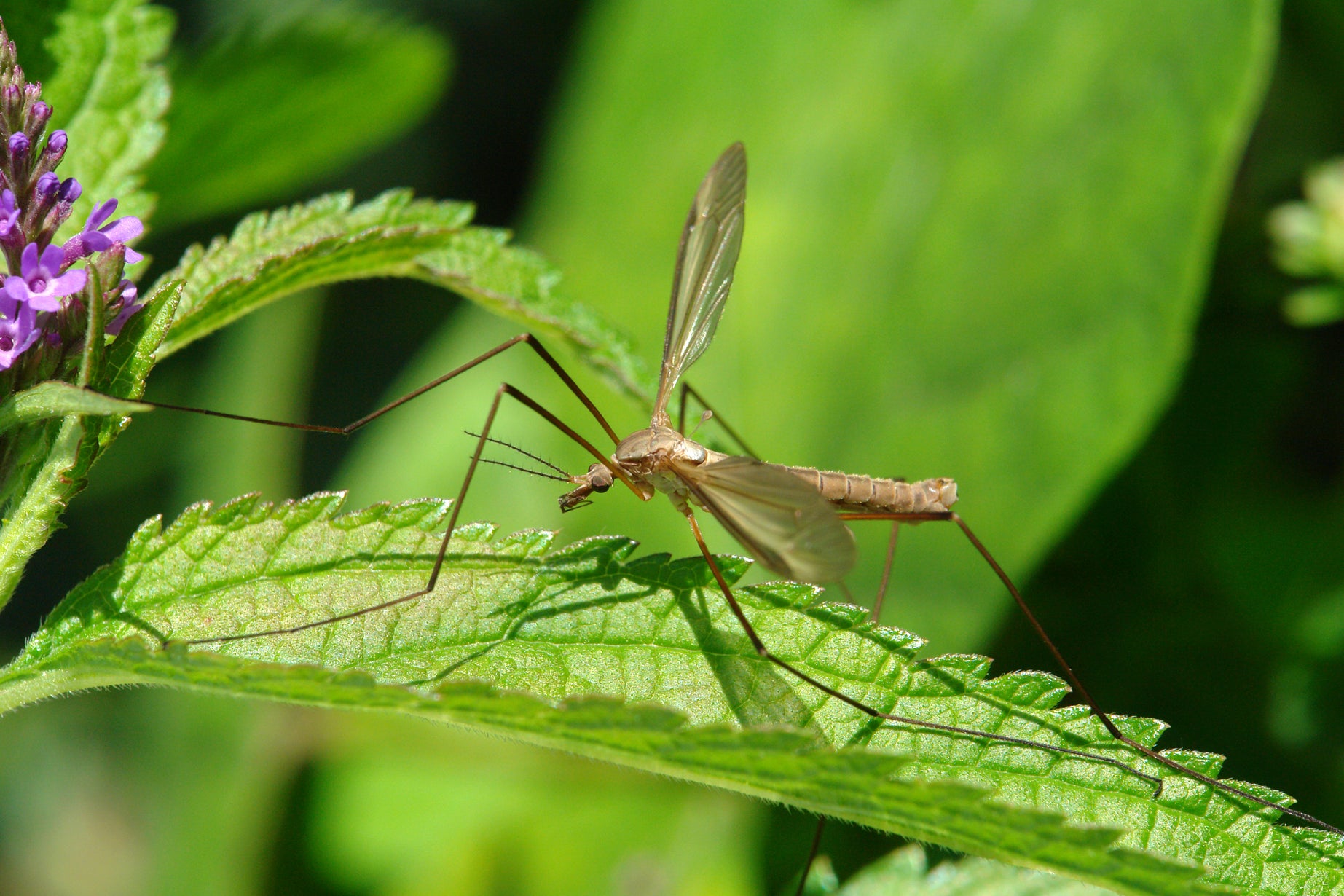Cranefly or Leatherjackets
Introduction
Leatherjackets are the larvae of the Cranefly, also known as Daddy Long Legs. There are reported to be over 300 species found in the British Isles, with as many as 15,000 worldwide, existing in many different habitats. However, the main problems to turfgrass in the UK are caused by just two species, Tipula paludosa and T. oleracea.
The lifespan of the adult is commonly only ten to fifteen days as its sole purpose is to mate. During this period, they can come to the attention of people as they fly ungracefully around exterior lights and invade households in search of a mate. Turfgrass problems are caused during the larval stage when leatherjackets feed on the roots of the grass plant making the plant more susceptible to disease and killing the plant. Significant secondary damage can also occur as predators such as starlings, rooks, crows, jackdaws, magpies, foxes and badgers dig up the turf in search of an abundant high protein feed lying just beneath the surface.
Identification
The first indication of a problem is usually birds pecking and damaging the surface, in severe infestations the turf turns yellow in patches and bare areas start to appear. Lift back the turf to find leatherjackets feeding on the roots of the grass plant; generally at the edge of an infected area.
The larvae have an elongated grey/brown tubular body up to 30 mm long without any legs. The adults look similar to a very large mosquito although they have a very distinct ungainly flight. Their bodies are long and thin, so much so, that it is very easy to break off their legs when trying to catch them. Adult Crane Flies do not damage turf, nor do they bite or sting.
Methods Of Control

Control is best achieved through the use of an Integrated Pest Management (IPM) plan. An IPM plan helps site managers to understand the pest within the context of their site and to take appropriate action to help reduce the threat of damage before it has become a problem. Steps within an IPM plan include:
- Identify the pest.
- Map the site and set priority levels for different areas.
- Set action thresholds.
- Monitor the pest.
- Take appropriate action once action thresholds have been exceeded.
- Review the process and make changes as necessary.
Cultural Control
As with most problems the symptoms can be relieved more effectively prior to the onset of problems or when symptoms are first noticed. Scarify and aerate turf in the autumn. Where there is a history of infestation compress the turf by rolling it in the spring.

Natural Predators
Starlings are an important natural predator of chafer beetles and craneflies; narrow beaks facilitate feeding on these pests whilst causing minimal damage to turf. Introducing Starling boxes will not only help support your local population of this red listed species but will also help reduce problem species such as leatherjackets.
Chemical Methods of Control
The insecticide, Acelepryn, is fully authorised as of 2023 for the control of chafer grubs and leatherjackets in amenity grassland and managed amenity turf. It should be applied when the adult insects are at peak activity and works by controlling early-stage larvae as they emerge from eggs laid in the soil profile. Acelepryn can be used to reduce potential damage in the current year and as part of an integrated pest management programme designed to achieve continued reduction in the pressure from these pest insects.
Biological Control
The nematodes Steinernema feltiae and Steinernema carpocapsae are commonly used as a biological control for leatherjackets.
Nematodes are the most abundant multicellular organism on Earth. They are a very diverse group of animals with an estimated 1 million species adapted to specific ecological niches.
The group of nematodes that are used to control Chafer Grubs are host specific. The species used to control chafer grubs are; Steinernema feltiae and Steinernema carpocapsae. Steinernema carpocapsae is the more active of the two at cooler temperatures and can therefore be more effective when additional nematode applications are required in the spring. These nematodes are native to Britain, persistent in the soil for long-term control and are safe for users and the environment.
The nematode penetrates the grub and releases bacteria (Xenorhabdus spp.) that kill the chafer grubs by stopping them feeding.
Nematodes need to be applied to moist soil in affected areas during August to October when the soil temperatures are in excess of 12oC (54oF) and the grubs are active. A secondary application during March to April is possible for severe infestations. Sufficient water should be applied after application to ensure the nematodes are washed into the soil profile.
The lifecycle of a leatherjacket is illustrated below and explains that the most effective time to apply nematodes will be between August to October. At this time the larvae are at the top of the soil profile and large enough to encounter the nematodes.
Download or view our Integrated Pest Management leaflet for more information on Leatherjacket control.
Links
- Integrated Pest Management Leaflet
- Starling Boxes
- Edgbaston Priory Club; what's lurking beneath the surface?
- Leatherjackets
For further information, please contact a member of our technical sales team on 01902 440250.




